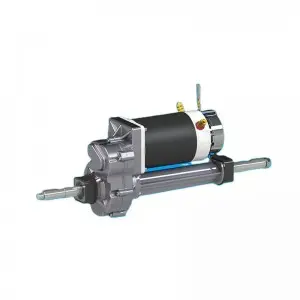The transaxle is a critical component in a vehicle’s driveline, and understanding its operation, especially in the case of an automatic transmission, is crucial for any driver or car enthusiast. In this article, we’ll take a closer look at the intricacies of automatic transaxle operation and the role of the shifter in controlling this important automotive system.
First, let’s discuss what a transaxle is and its importance in a vehicle’s drivetrain. A transaxle is a combination of transmission and differential mounted in a single integrated unit. This design is common in front-wheel drive and some rear-wheel drive vehicles. The transaxle performs a dual function, transmitting power from the engine to the wheels and allowing the wheels to rotate at different speeds, such as when cornering.
In the context of an automatic transaxle, operation is further enhanced by the inclusion of a torque converter, which replaces the clutch in a manual transmission. The torque converter allows for smooth, seamless gear changes without the need to manually engage the clutch. This is where the gear lever comes into play, as it acts as an interface between the driver and the automatic transaxle, allowing selection of different driving modes and gears.
Automatic transaxle operation is a complex and complex process involving multiple components working in harmony to deliver power to the wheels. When the driver moves the gear lever, a series of actions are initiated within the gear lever to achieve the desired gear selection. Let’s take a closer look at the key aspects of automatic transaxle operation and the role of the shifter in the process.
Gear selection:
The primary function of the gear lever in an automatic transaxle is to enable the driver to select the desired gear or driving mode. This can include options such as Park §, Reverse ®, Neutral (N), Drive (D) and various other gear ranges, depending on the specific transmission design. When the driver moves the gear lever to a specific position, it sends a signal to the transaxle’s control system prompting it to engage the corresponding gear or mode.
Shift solenoid valve:
Within the transaxle, the shift solenoid valve plays a vital role in the gear selection process. These electro-hydraulic valves are responsible for controlling the flow of transmission fluid to actuate gear changes. When the gear lever is moved, the transaxle control unit activates the corresponding gear solenoid valve to initiate the gear selection process. Seamless coordination between shifter input and transaxle internal components ensures smooth, precise shifting.
Torque converter lock-up:
In addition to gear selection, the gear lever in the automatic transaxle also affects the operation of the torque converter lock-up. Torque converter lockup mechanically connects the engine and transmission at higher speeds, improving fuel efficiency and reducing heat generated within the transmission. Some modern automatic transmissions have a specific position on the shifter, usually labeled “overdrive” or “O/D,” that engages the torque converter lockup for highway cruising.
Manual mode and sport mode:
Many modern automatic transaxles have additional driving modes that can be accessed via the gear selector. These modes may include Manual, which allows the driver to select gears manually using the paddle shifters or the gear lever itself, and Sport, which changes the transmission’s shift points for a more dynamic driving experience. By manipulating the gear selector, the driver can access these different driving modes, tailoring the vehicle’s performance to his or her preference.
Safety interlock device:
The gear lever in automatic transaxles is equipped with a safety interlock to prevent accidental engagement of the gears. For example, most vehicles require the brake pedal to be depressed before shifting out of Park to ensure the vehicle is at a standstill before engaging the transmission. In addition, some vehicles may have a locking feature that prevents shifting into reverse or forward gear without using a specific release mechanism, further increasing safety and preventing accidental shifting.
In conclusion, the operation of the automatic transaxle and the action of the gear lever are integral to the overall functionality of the vehicle’s drivetrain. By understanding how the shifter affects gear selection, torque converter operation, drive modes and safety interlocks, drivers can gain a deeper understanding of the complex engineering that underpins modern automatic transmissions. Whether driving on stop-and-go city streets or cruising on the open highway, the seamless interaction between the shifter and automatic transaxle ensures a smooth, responsive ride for motorists everywhere experience.
Post time: Aug-07-2024


